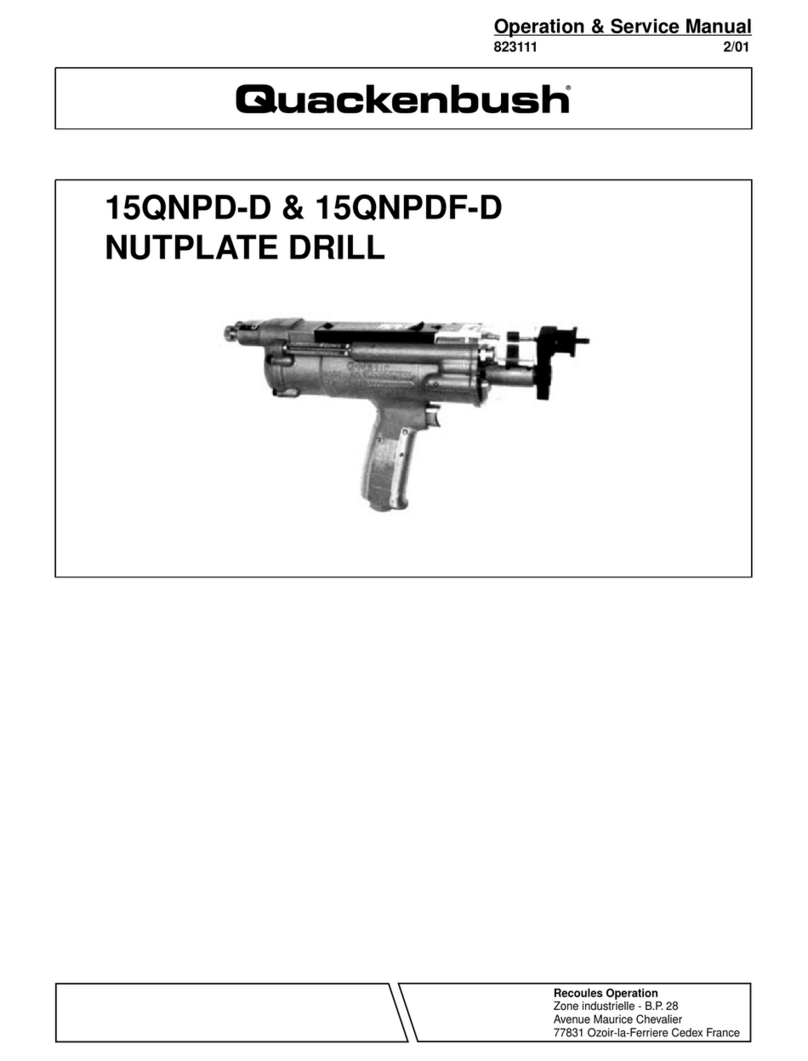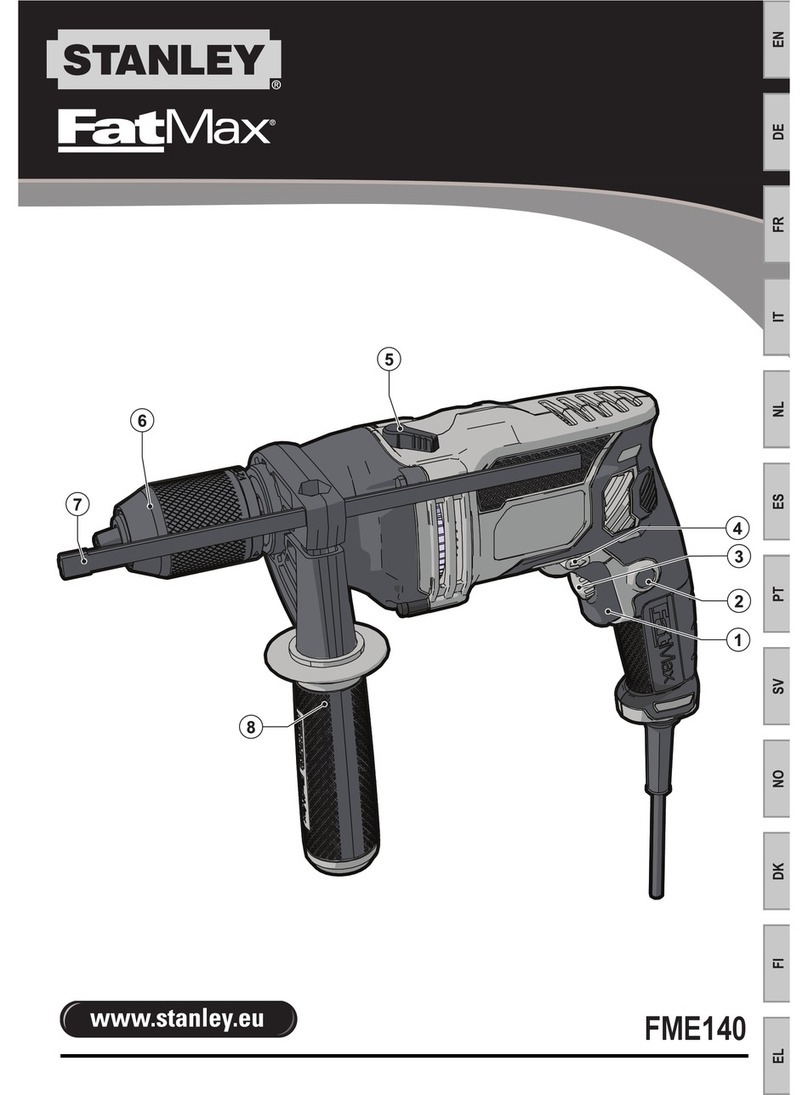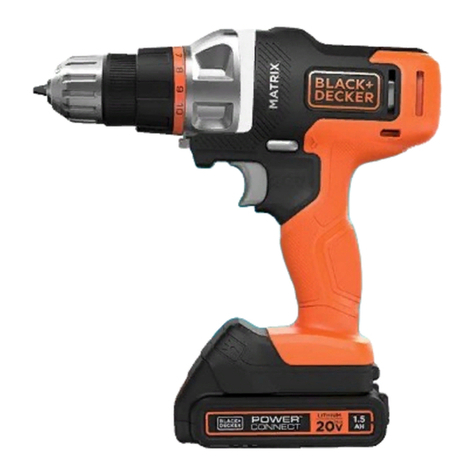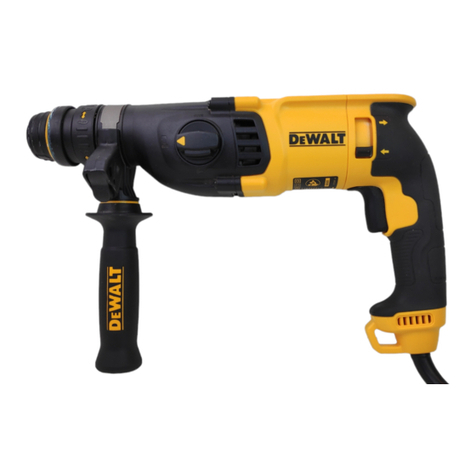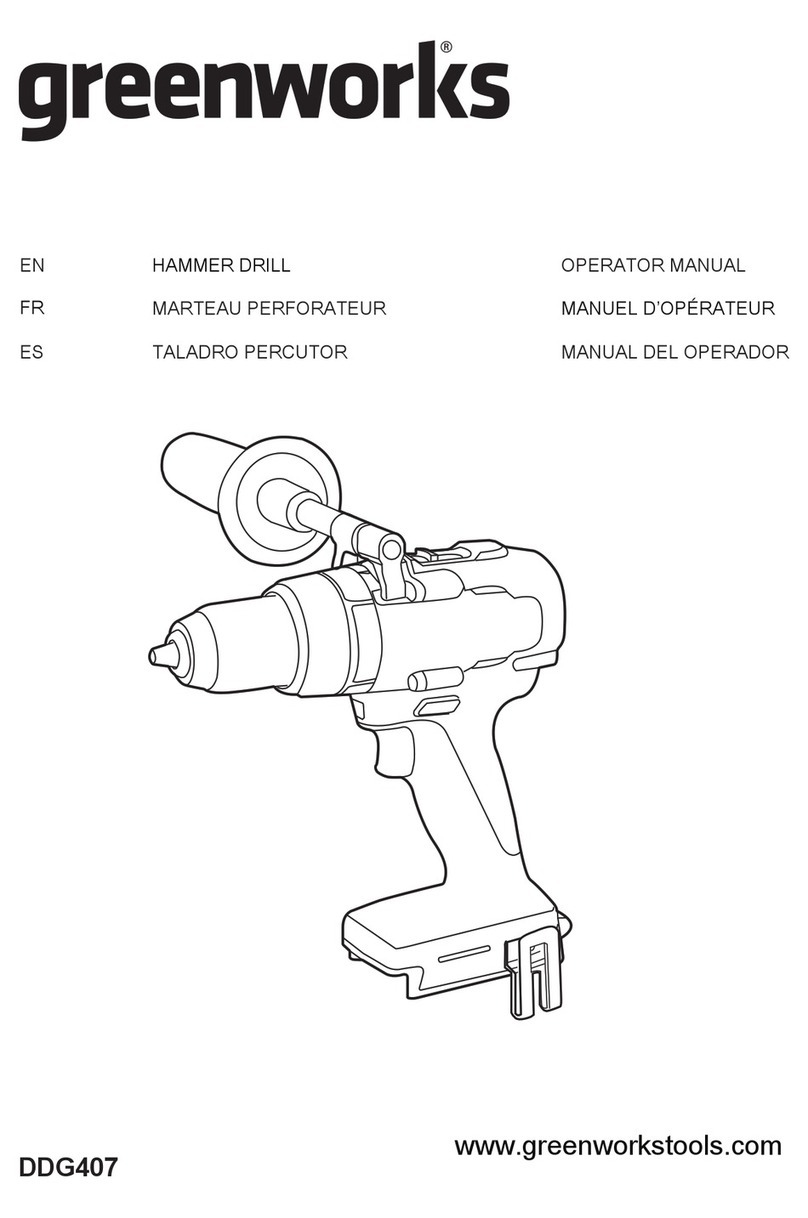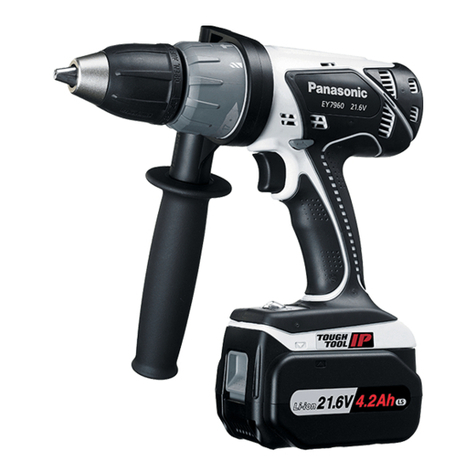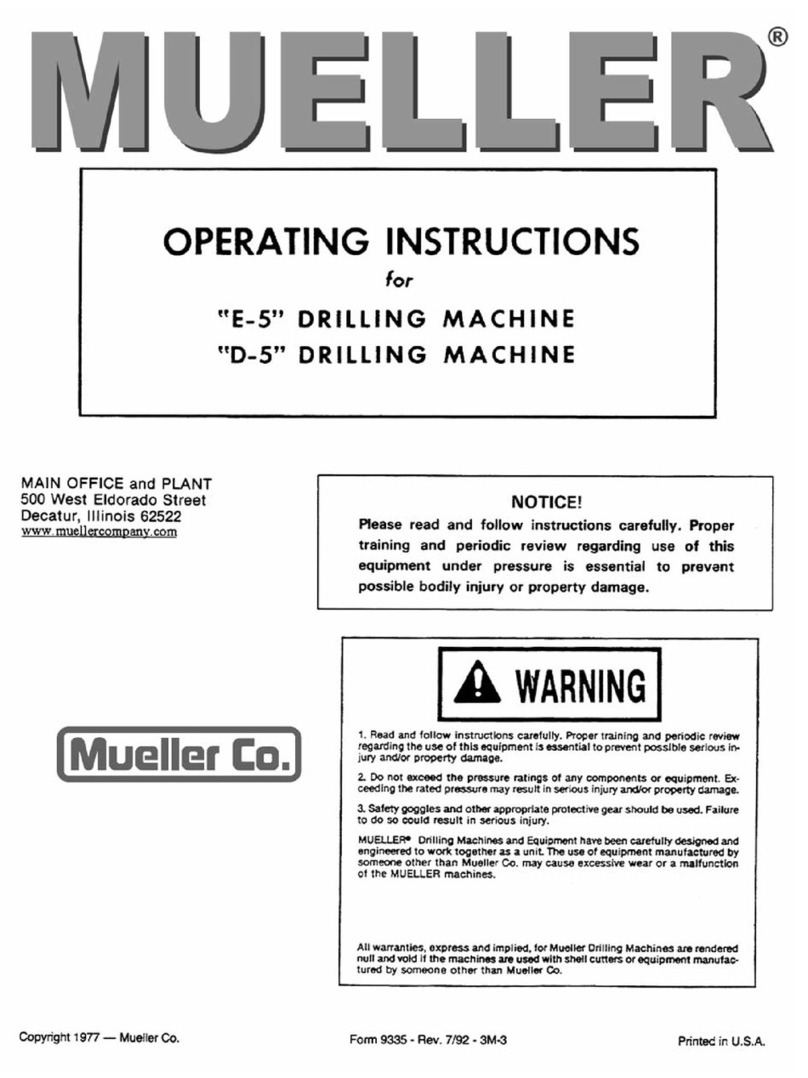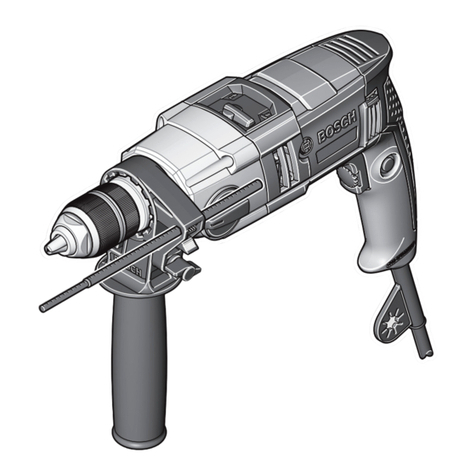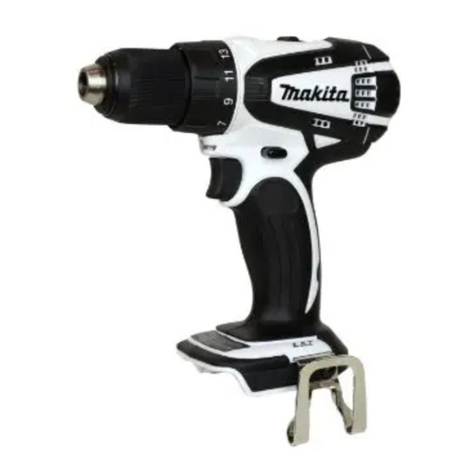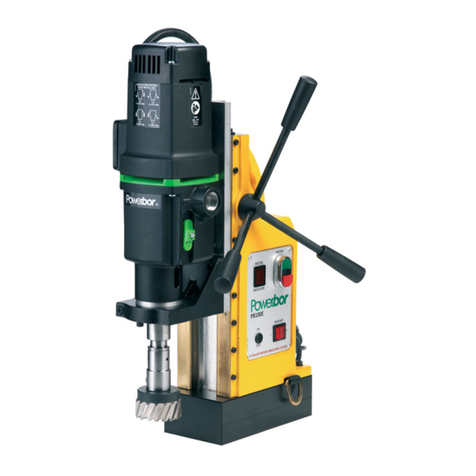Safety, Operation & Service
Page 8
EN-823122
February 17, 2004 Quackenbush
Operating and Safety Instructions
6. Release rapid advance lever 2and press green
drill button 4all the way in. Motor starts. Release
drill button 4. Motor continues to run. Both gears
(splined and threaded) rotate.
7. Lift manual retract lever 5and release.
An audible "snap" indicates the retract valve
382333 is shifting as desired. Spindle feed gear
(threaded l.D.) stops rotating.
8. Depress signal valve 8with screwdriver and
release. Motor stops and retract valve 382333
must reset (manual retract lever 5should drop).
Depress red stop button 1 slowly. There should
be no venting of air as the stop button
1is depressed.
9. The lift arm assembly 382665 must be intact,
undamaged, and in place in the upper block.
The lift arm assembly is factory adjusted (new
tool) for little or no play.
10. Press green drill button 4and release. Motor
starts. Press stop button 1. Motor stops.
Do not proceed with test if steps 1through 10
indicate malfunction.
11. WARNING: Keep hands and clothing clear of
rotating spindle. Using tool 382593, install spindle
(with retract stop collar 7locked in place).
The spindle will retract fully into the head and the
motor will stop automatically. The retract valve
382333 must reset (manual retract lever 5
should drop) and there should be no venting of air
when the stop button 1is depressed.
12. Screw depth stop 6(left hand threads) onto the
rear end of the spindle and lock in place. Rapid
advance until depth stop 6bears against
back of drill head. Rapid advance clutch will
"chatter". Manual retract lever 5must not rise as
clutch "chatters". Release rapid advance lever.
13. Depress green drill button 4and release.
Motor starts. Retract lever 5rises and spindle
retracts automatically to full retract position.
Motor will stop automatically.
14. Replace rear spindle guard.
INSTALLING A SPINDLE:
Run a "Too Function Check" (page 7)
Important: Retract stop collar 2382579 must be in
place and locked on the spindle. Install the spindle in
the spindle drive gear 617200 and use spindle "in &
out" tool 382593 to push the spindle "in". Depress the
green drill button to start the motor and raise the man-
ual retract lever 5. The spindle will retract. Release the
drill button. The spindle will continue to retract until the
retract stop collar 7depresses the signal valve 8and
the tool will automatically shut off. Note: When the
retract stop collar 7is near or touching the signal valve
8; Do not press the green drill button 4; as this will
prevent tool shutoff and jam the spindle into the head.
CHANGING FEED GEARS—Remove (left hand
threads) the adjustable depth stop 6from the rear of
the spindle. Using the spindle "in & out" tool 382593 to
support the front of the spindle, depress the rapid
advance lever 2and feed the spindle forward until the
spindle feeds itself out of the spindle feed gear.
Release the rapid advance lever, shut off the air sup-
ply, and pull the spindle out of the spindle drive gear.
Remove the side hose assembly. Unscrew and
remove one (1) 6-32 x 1 (7164" hex) socket head cap
screw 382539 and two (2) 1/4-20 x 2-1/4 (3/16" hex)
socket head cap screws 867839 Note: Clamping the
tool in a vise will make removal of the screws more
convenient. Insert finger in spindle feed gear to pre-
vent the eighteen (18) 7/32" balls 842160 from being
lost when removing upper block assembly and spindle
feed gear. Remove differential feed gear. Remove
gear holder 382557. Refer to the feed chart on assem-
bly drawing for the appropriate feed gears. The feed
gears are marked with the number of teeth each one
has — example 33T (thirty three teeth). After installing
the replacement gears, be sure that gear holder
382557 is aligned and in place. The right angle head
should be securely clamped in the vise and
compressed so that the two (2) cap screws 867839
and cap screw 382539 can be firmly tightened.
SHEAR PIN MAY SHEAR BECAUSE:
1. Motor doesn't stop at full retract, or the retract
valve did not reset. Retract collar 7jams into
housing cover 382582 or 382591. Pin shears.



